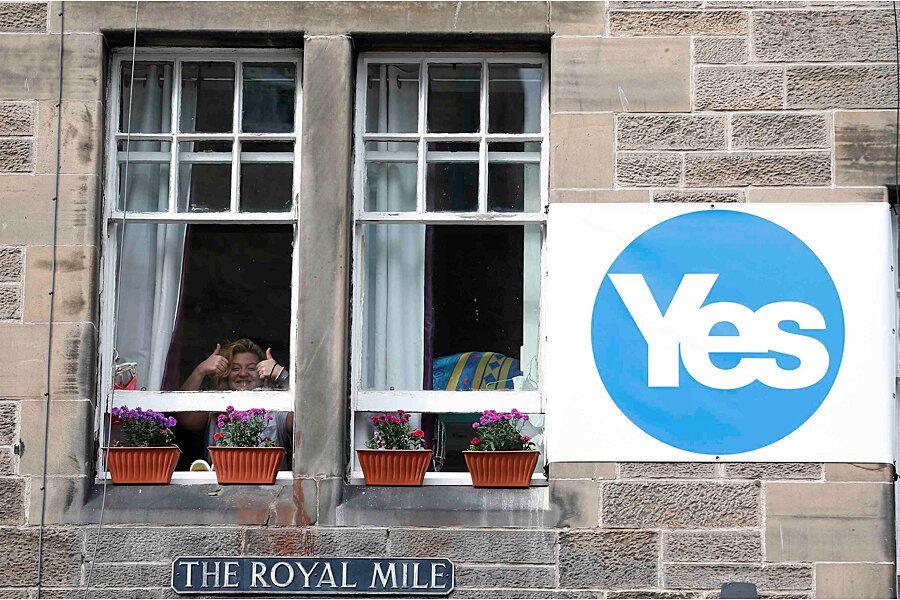Why Scottish breakaway bid may hinge on voter turnout
Loading...
| Glasgow, Scotland
Margaret Malcolm stands on the doorstep of a suburban house on the north side of Glasgow, pen and clipboard in hand. “Have you decided how you are going to vote in the referendum?” she asks the elderly bespectacled man who answers the door.
“I’m still making up my mind, to be honest,” he says, his hand resting on the door latch. “I’m still not sure.”
Heading back down the garden path, Ms. Malcolm, a retired psychiatrist, assesses the likelihood that the man will vote for Scottish independence. A ten is a certain yes; zero a guaranteed no. She marks down a six. This score means his pebble-dashed house will get another visit from independence activists before Scotland goes to the polls on Sept. 18.
The future of Scotland could hang on the outcome of such visits. For months, the “No” campaign has held a significant lead, to the relief of British politicians in London. But that advantage has been erased: Recent polls put the two sides neck and neck.
Now as the battle for Scotland enters its final days, the key fight is increasingly which side can most effectively get the vote out. A recent opinion poll suggested turnout among registered voters could be as high as 91 percent, almost double that of the last Scottish parliamentary election in 2011. Turnout in Britain's 2010 general election was 65 percent.
For the past two years, Yes Scotland, the pro-independence side, has fed information collated from doorstep canvasses from thousands of activists like Margaret Malcolm into a database called YesMo. Nationalists say this software gives them the edge in targeting potential supporters and getting them to the polling stations.
The “Yes” camp has a huge numerical advantage in terms of local activists, many of whom are new to politics. However, their rivals can draw on the experience of Britain’s main political parties, all of which oppose independence. The Labour Party, Conservative Party, and Liberal Democrats have lined up behind Better Together, the official “No” campaign.
Divisions in unionist camp
Internal friction has marred the “No” camp. The loudest voice in it belongs to the Labour Party, the opposition in Britain’s parliament to Prime Minister David Cameron’s coalition. Labour has long been the dominant electoral force in Scotland, where Mr. Cameron’s Conservative Party typically does poorly at the polls. But analysts say Better Together’s stress on the economic uncertainty of an independence vote plays poorly among working-class Labour voters. And some Labour activists have refused to work with rival Conservatives.
But with less than ten days to go, Labour’s formidable political machine could prove vital. “We are down to the ugly ‘drugs-raid style’ politics,” says one activist. "It’s calling to people’s door (asking) ’Have you voted?’ If they haven’t, calling back an hour later and physically bringing them to the polling station.”
A high turnout is widely seen as benefiting the “Yes” campaign, which has focused on what it calls “the missing millions” – Scots who don’t normally vote or aren’t on the electoral roll. Polls suggest that in working-class districts of towns and cities, a majority favor independence, in contrast to middle-class voters more swayed by unionist arguments.
‘The ‘Yes’ side reckons that many of these extra votes will be cast by less well-off and strongly disillusioned voters who are attracted by the prospect that independence might bring about radical change,” says John Curtice, professor of politics at Strathclyde University in Glasgow.







